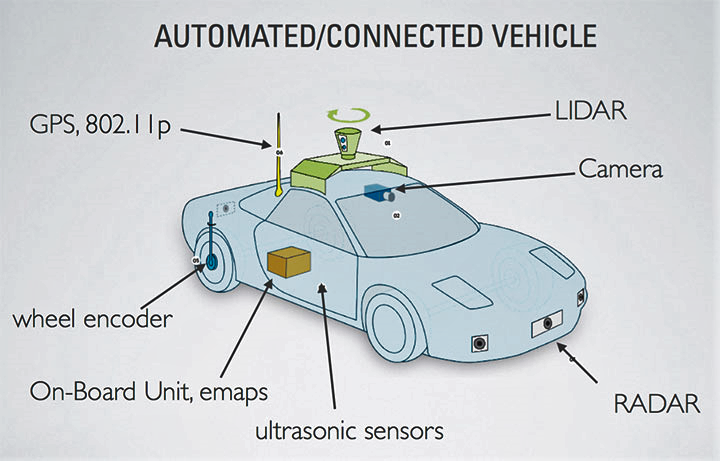The following shows the important components of a self-driving vehicle. The list of parts and their functionalities will be discussed in this section. We'll also look at the exact sensor that was used in the autonomous car for the DARPA Challenge.

Figure 4: Important components of a self-driving car
As you know, the Global Positioning System (GPS) helps us determine the global position of a vehicle with the help of GPS satellites. The latitude and longitude of the vehicle can be calculated from the GPS data. The accuracy of GPS can vary with the type of sensor; some sensors have an error in the range of meters, and some have less than 1 meter of error. We can find vehicle state by combining GPS, inertial measurement unit (IMU) and wheel odometry data, and by using sensor fusion algorithms. This can give better estimate of the vehicle. Let's look at the position estimation modules used for the DARPA Challenge...



